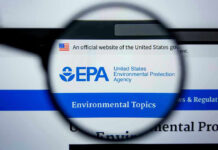Major career opportunities for American graduates are at risk as foreign worker programs face a critical battle in Washington.
Story Snapshot
- Sen. Jim Banks formally urges President Trump to end the OPT program that disadvantages U.S. graduates.
- OPT enables international students to take jobs in America, incentivizing corporations with tax breaks.
- Legislative and executive efforts focus on restoring fairness and closing loopholes that benefit foreign labor over Americans.
- Uncertainty looms for universities, tech companies, and international students as policymakers debate sweeping changes.
Sen. Banks Takes Aim at OPT Program: A Push to Prioritize American Graduates
Senator Jim Banks has made a direct appeal to President Donald Trump, calling for the immediate termination of the Optional Practical Training (OPT) program. Banks argues that OPT, which allows international graduates to work in the U.S. after finishing their studies, unfairly tilts the job market against American graduates. By offering corporations tax incentives to hire foreign workers, critics claim the program invites corporate abuse and erodes opportunities for hardworking U.S. citizens.
Banks Asks Trump to End OPT Program Favoring Foreigners for U.S. Jobs: Only a Republican Would Propose This Common Sense Change 👍 https://t.co/BktOj2ZKiT
— TMill57 (@TMill57) November 5, 2025
The legislative spotlight intensified in August 2025 when Banks introduced S. 2821, a bill aiming to abolish OPT entirely. This move was soon echoed by prominent allies, including Sen. Chuck Grassley, who demanded the Department of Homeland Security (DHS) halt all OPT work authorizations. These developments underscore a broader political and ideological effort to overhaul U.S. immigration and labor policies, especially in sectors like technology where foreign labor has become increasingly common. The DHS has since included a proposed rule to amend or end OPT in its Unified Regulatory Agenda, signaling that regulatory changes are on the table and could arrive within months.
Historical Background: How OPT Became a Flashpoint
The OPT program originated as an administrative measure, not an explicit congressional statute, to give international students in F-1 status a chance to gain practical work experience for up to 12 months (with a 24-month extension for STEM fields). Over recent years, OPT usage surged, particularly among tech companies seeking to fill skilled positions. Critics argue this growth has come at the direct expense of American job-seekers, with growing concerns about regulatory ambiguity, program abuses, and the prioritization of foreign labor through tax advantages not available to U.S. graduates.
Legal challenges and past attempts to reform or restrict OPT have added to the contentious atmosphere. Congressional testimony and investigative reporting have repeatedly highlighted loopholes and abuses, fueling demands for tighter regulation or outright abolition. The current debate reflects a deep divide between those aiming to protect American workers and those advocating for continued global talent flows, particularly in STEM fields vital to U.S. competitiveness.
Key Stakeholders and the Battle Lines Drawn
The push to end OPT has rallied a coalition of lawmakers, with Sen. Banks at the forefront and support from figures such as Sen. Grassley, Rep. Paul Gosar, and Sen. Tom Cotton. Their stated mission is to put American workers first by closing avenues for corporate exploitation of foreign labor. The Trump administration, already known for decisive executive action, is actively considering regulatory changes through the DHS, led by Secretary Kristi Noem. Tech giants like Microsoft and others, who rely heavily on OPT and H-1B workers, are lobbying to preserve access to global talent, warning of negative consequences for innovation if OPT is scrapped.
International students—mainly from India and China—stand to lose the most if OPT is curtailed, facing immediate uncertainty about their ability to remain and work in the U.S. U.S. graduates, meanwhile, are watching closely, hoping that reforms will finally put them back in the driver’s seat for entry-level and high-skilled jobs. The outcome will also impact universities, which have grown dependent on tuition revenue from international enrollees attracted by OPT’s work promise.
What Happens Next: Current Status and Broader Implications
Despite the mounting pressure, no final regulatory or legislative action against OPT has yet been taken. The DHS rulemaking process could stretch over the next 6–12 months, prolonging uncertainty for students, employers, and educational institutions. In the short term, tech companies may face disruptions in hiring, while universities could see a drop in STEM enrollments if OPT is eliminated. Long-term, the debate raises critical questions about U.S. global competitiveness, labor market fairness, and the future of American innovation. Critics warn that ending OPT could reduce diversity and cross-cultural exchange in STEM, while supporters view it as a long-overdue correction that restores opportunity to American families and workers.
Expert opinions remain divided. Some, like Jessica Vaughan of the Center for Immigration Studies, highlight the risk of “diploma mills, bogus training programs, and illegal employment” fostered by OPT. Others, such as NAFSA and the OPT Observatory, argue that the program is critical for U.S. innovation and that abrupt changes will sharply reduce international enrollment. As the Trump administration weighs its options, the tension between protecting American jobs and maintaining America’s leadership in STEM and higher education is front and center. For now, the fate of OPT—and the future for thousands of American and international graduates—remains undecided.
Sources:
Jim Banks’ American Tech Workforce Act targets OPT: Are US job opportunities at stake for students?











